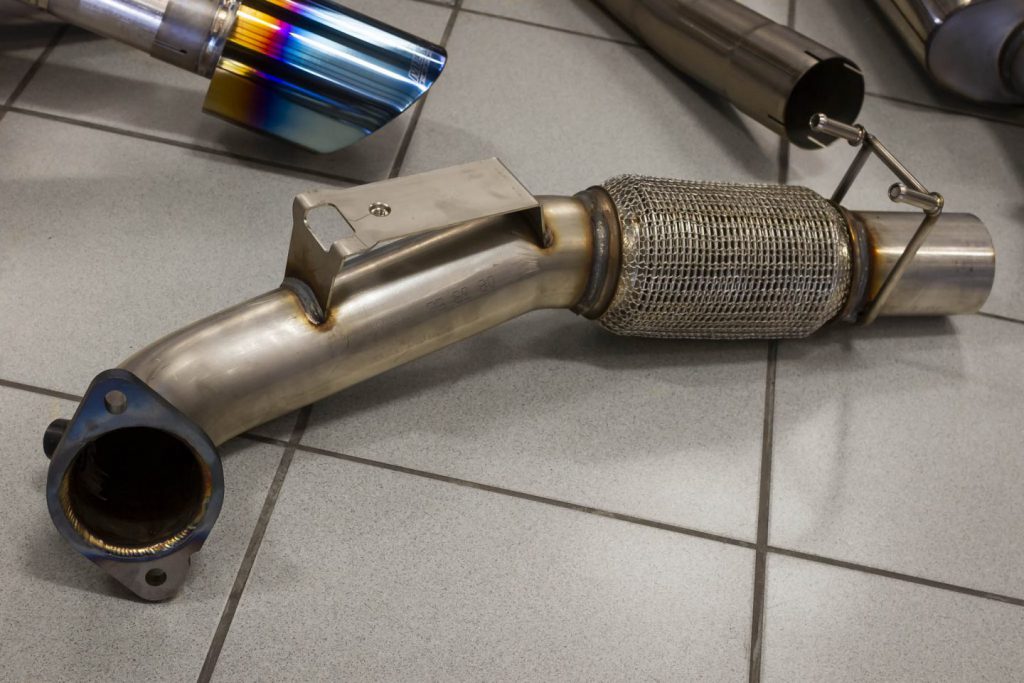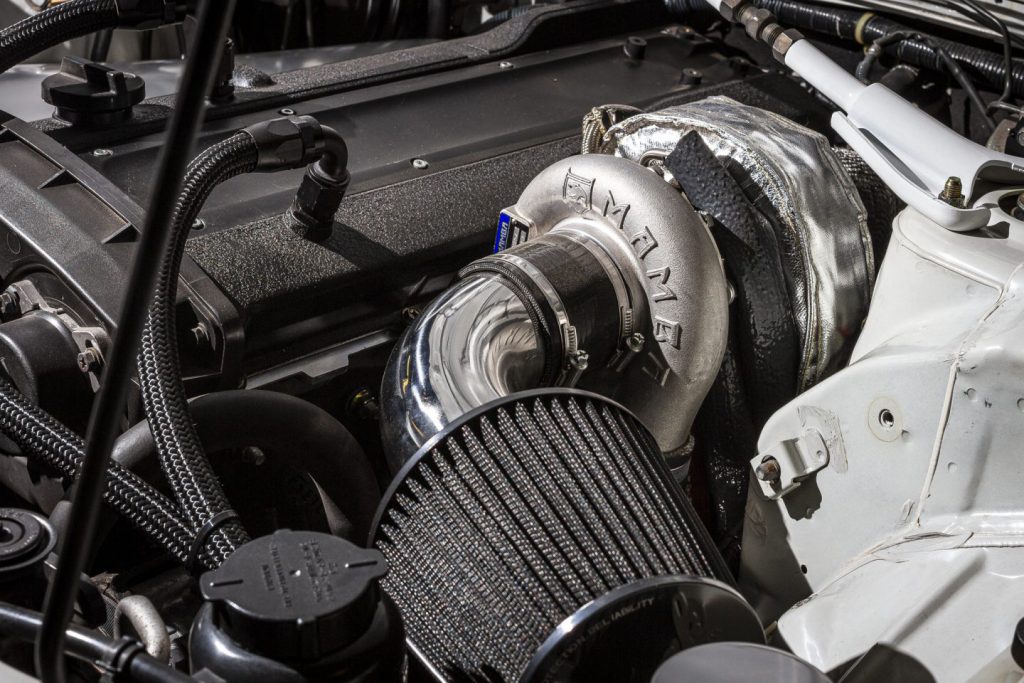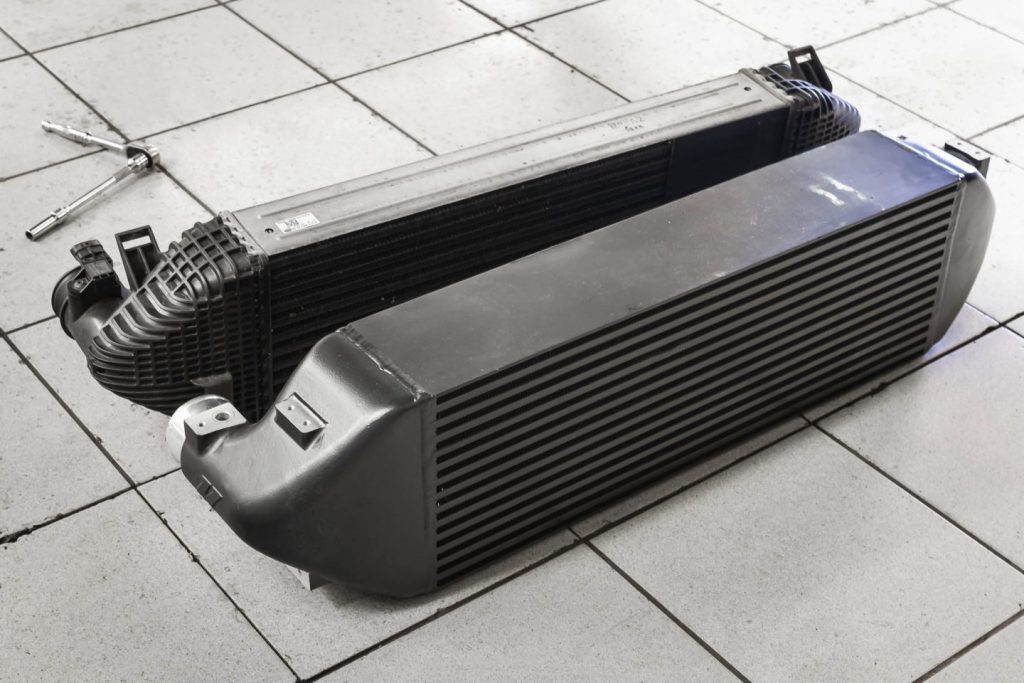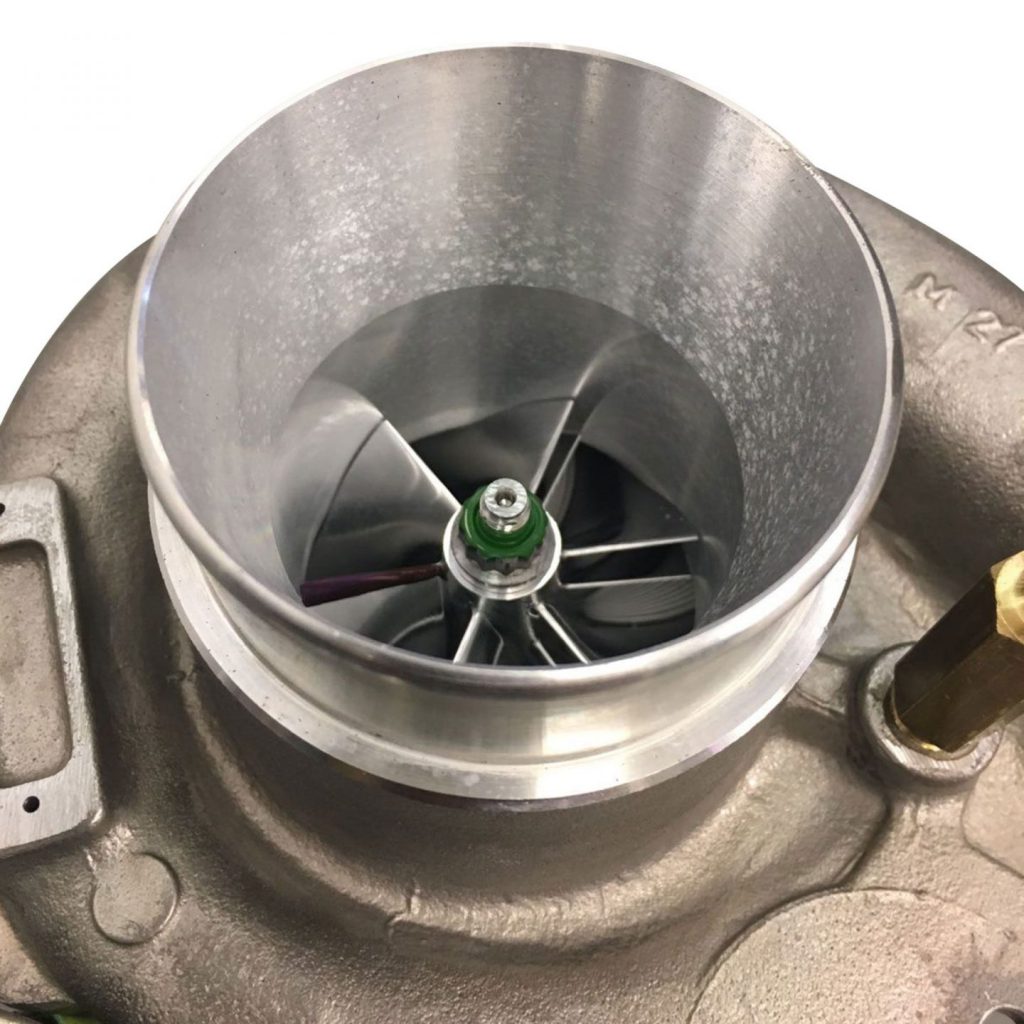
One of the more confusing bits of terminology you might hear when you first take an interest in car tuning is the concept of the “Stage”. While the basic idea of stage tuning stages is simple, how these terms get thrown around isn’t, so today we’re going to take a quick look at how this works.
To keep things short, we’re going to focus on turbocharged petrol engines. Non-turbo engines can use many of the same techniques to gain power, but without the easy power gains to be had from increasing boost. Diesel engines use most of the same tuning methods but have slightly different emissions control equipment.
What is stage tuning?
A stage represents a set of upgrades fitted as a set. As you might expect, a stage is how far you’ve gone with tuning part of your car. Stage 2 represents a more tuned car than stage 1. Where things can get a bit confusing is that what each “stage” means can vary from car to car, and even from tuner to tuner.
What one tuner considers to be stage 3 on a turbocharged Golf might be quite different from stage 3 on a normally aspirated BMW, for example. Worse still, what one tuner considers to be stage 3 might be completely different from another tuner working on the same car. There are some general rules of thumb, though.
Stage 1
Stage 1 tends to be a series of modifications that can be fitted on their own to a standard car. This would include remaps that don’t require any additional hardware, intake and exhaust upgrades that leave the original catalytic converters in place. You could make all these modifications on their own, and for good power gains too.
Doing them together will see the remap software giving you bigger benefits than it would on its own. One thing we would note – it’s not as simple as totting up the separate gains for each bit of hardware and the software together. Engines are complicated things and how everything interacts together is not 100% predictable.
Engine remapping

Upgrading a modern car often starts with a remap. This is the process of uploading slightly different software to the computer that controls the engine. This controls the fuel, spark, timing, and turbo-boost of the engine. By adjusting these settings, more power can be unlocked from the engine.
Remaps come in a few forms. Once upon a time, the norm was soldering a new chip onto the ECU, hence the term “chipping” a car. Now on most cars, this can be done via the diagnostics port, and the use of a laptop. We do that kind of remap in-house at our fitting centre and also offer tuning handsets. These are a really clever bit of technology that basically packs most of the hardware you need to remap a car into a handset not much bigger than a TV remote. You can use these yourself at home, which is an impressive level of convenience.
For some cars, remapping isn’t possible, but we offer a tuning box. These achieve the same end results, by modifying the sensor readings your ECU is seeing from the engine.
Depending on the engine, you can see significant power increases from the software alone. The current Golf GTI goes from 245HP to 295-313HP while the current Fiesta ST climbs from 200HP up to 233-252HP. However, not every car will gain this much power, it depends heavily on the engine and how much “spare” the manufacturer left in.
You could just pop a remap on and call it a day. The software only gets better and better as you remove limiting factors from the car’s engine and give the software more room to breathe.
Air intakes
Once you start tuning up a turbo petrol engine for higher boost, considerations like the temperature of the air going into the engine, and the effect that has on power, start to become more important. Keeping the engine fed with enough cold air definitely helps you both achieve more power and maintain power to the engine trimming back boost and timing in response to the air going into the engine and heating up. A well-designed air intake/induction-kit will help keep the engine fed with cold air.
Increasingly on modern cars, the stock air intake works quite well, so for stage 1, you could just fit a performance air filter. These drop straight into the original airbox and use a less restrictive filter material than paper. While gains are unlikely to be as big with a full intake, it certainly won’t hurt performance.
Exhausts
A cat-back exhaust is normally where you start to see power increases, even with stock or standard software. By opening up the rear section of the exhaust so more gas can flow through it, you’re increasing the amount of air that the turbo can pump through the engine. Derestricting the exhaust at the same time as upping the boost should see the benefits of both working together to give you even more power.
An example: Stage 1 VW Golf Mk6 GTI
The Golf Mk6 GTI starts with 210HP. It has a 2.0 litre turbocharged four-cylinder engine, which is often a good start when it comes to tuning. Revo quote between 50 and 75 extra horsepower for their remap software alone (this will vary from car to car, according to fuel quality and other factors).
On many cars, you can fine-tune Revo remaps for different quality fuel along with other settings. You can buy an extra bit of hardware that lets you switch between these settings.
On top of that, you can add a high-quality air intake. K&N’s Typhoon intakes have all of the features you’d expect to see from a good air intake, with a heat shield to keep hot air out of the big cone filter, well designed pipework, and lots of filter surface area on offer. K&N are quoting 3.29 extra horsepower from the intake on its own.
At the back of the car, any high-quality cat-back exhaust will free things up a little bit.
Stage 2
Stage 2 can be a little different between cars, depending on what their weak spots from the factory are, but the common theme tends to be removing limiting bits of the exhaust in combination with software that takes advantage of this.
Engine remapping
As with stage 1, the remap will increase power. It also takes care of the different performance from a sports catalyst or de-cat pipe. Fitting this hardware without a remap will normally result in the engine reading the altered readings from the exhaust sensors as a fault and displaying the dreaded engine management light.
Please note: Non type approved sports cats cannot legally be installed on a vehicle for use on public roads that was manufactured after 1/3/2001.
Exhaust downpipe

On most petrol turbo cars, this is going to start with the downpipe. This is the section of exhaust directly behind the turbo. Turbos are at their most efficient with as little restriction behind them as possible. This means any opening out of this section of exhaust can unlock serious power gains.
In order to do this, you’re going to be replacing the original catalytic converter or converters, either with a de-cat pipe, or a better flowing sports catalyst. A de-cat pipe replaces the original catalytic converter with a straight through pipe. A sports-cat replaces the original catalytic converter, but with higher quality, more efficient one. However Non type approved sports cats cannot legally be installed on a vehicle for use on public roads that was manufactured after 1/3/2001.
The standard software the engine comes with is only really tuned for the original catalytic converter, so stage 2 normally means software that specifically takes advantage of the increased gas flow on offer.
Air intake / air induction kit

Again, as with stage 1, an uprated air intake is definitely on the cards, and because you can get much more exhaust gases through the turbo you definitely want to make sure the turbo is not being restricted by the original air intake. You also want to make sure that the air going into the engine is as cold as it can be. Depending on the car, replacing either parts of the original set-up or swapping it out entirely may be the way to go.
Intercooler
An upgraded intercooler may well be on the cards, too. This is a type of air-to-air radiator that cools the air coming from the turbo before it goes into the engine. Squeezing air through the turbo heats it up, so cooling it back down is important.
There are two main benefits on offer here. Firstly, colder air contains denser oxygen, which is what your engine needs to burn petrol. More oxygen can enable it to make more power, especially if remapped to do so.
Secondly, your engine constantly varies how much power it’s trying to make in response to various sensor readings, including temperature. As temperatures creep up, your engine will reduce the power it’s trying to make. By better cooling the air going into the engine, you can help reduce how much this happens.
A high-quality intercooler from the likes of Forge or Mishimoto can increase power on its own but becomes even more worthwhile when you’re working your turbo harder with a remap.

Engine and gearbox mounts
Engine and gearbox mounts are designed to flex and twist. Otherwise you’d get all of the engine’s vibration in the cabin. Once you start upping the power the engine makes, they can start to flex more than you want them to. Replacing the floppy originals with stiffer aftermarket items can prevent this flex from robbing you of power. We carry a wide selection of these from brands including Vibratechnics, Powerflex, and Revo.
An example: Stage 2 VW Golf Mk6 GTI
Revo quote gains from 55HP up to 90HP depending on what settings are used with their software. The required hardware for their stage 2 software includes a high-flow exhaust system and a high-flow air intake.
They also recommend an uprated intercooler, uprated engine mounts, and an uprated throttle pipe. While these items are not considered essential for the remap to work, they will definitely help performance.
You could go with Revo’s own intake or any of the big range we carry. Revo’s own hardware is high quality, developed in partnership with respected tuning companies or in-house by industry veterans.
You’re truly spoiled for choice on the exhaust front with the Golf GTI covered by almost all of our suppliers offering a high quality exhaust for this car. Your choice will likely come down to what noise is preferred.
Stage 3 and higher
It’s at this point that stage tuning can start to get a little confusing. As you push the engine past what it was originally designed to do, various components that were quite happily doing their job at a lower power level will start to need replacing with higher rated parts.
Exactly which components vary from car to car. We’ll discuss some of the things that can be required for higher stage remaps but bear in mind these vary a lot from engine to engine. You may not need any of these on your car. The remap software vendor should specify what you need – ours certainly do!
Fuel injectors
As power levels increase, so too does the amount of fuel the engine requires to make that power. At some point as you increase the power of the engine you will need to fit higher capacity fuel-injectors. Often these come from another engine in the same family making more power. For example, higher stage Golf remaps may use Audi RS4 injectors.
Fuel pump
Keeping your engine fed with enough fuel is vital. The right level of fuel helps keep temperatures inside the cylinders in your engine down. Not supplying enough fuel can cause bits to start melting. At what stage you need to consider this varies from car to car, according to how powerful the fuel pump that they came with is.
Turbocharger

On a turbo-charged engine, one of the biggest limiting factors in how much power the engine can make is the turbo itself. You can only spin a turbo so fast before either the turbo itself can’t take it or the air being forced into the engine is getting too hot. At this point, you need to go for a bigger turbo. As with fuel injectors, often the upgrade path involves swapping out the bigger turbo from another engine in the same family. A good example is swapping a Golf R turbo onto a Golf GTI.
Engine internals
Your engine is full of finely balanced moving parts made from metal. As you increase the power it’s making, the stresses these are subjected to increase. They will have been designed to stand-up to a certain amount of stress, but once you’re exceeding those limits, you’ll need to start swapping these out for stronger versions. Exactly where these limits lie varies a lot from one engine to another. Some engines come out of the box overbuilt for power levels far in excess of what the car is running from the factory. Others require some upgrades to chase after big power figures.
An example: Stage 3 VW Golf Mk6 GTI
Revo’s Stage 3 Golf GTI package includes swapping out the K03 turbo the car comes with for the bigger K04 turbo as used on the Golf R. The bigger turbo allows much higher levels of boost to be reached, but the map on the engine needs to be changed to work correctly with the bigger turbo.
Revo are quoting power levels of up to 375HP with their software, a K04 turbo upgrade, and supporting hardware.
As well as the turbo kit, Revo require everything they wanted for Stage 2, along with an uprated intercooler, and uprated sparkplugs.
They also recommend uprated engine mounts, intercooler pipework upgrades, and an uprated clutch.
What else should I upgrade?
In addition to what we’ve already listed there are a number of other components that you could also consider, including:
Brakes

While not always mentioned on lists of required hardware, if you’re accelerating and driving faster, it only makes sense that you should be able to slow down or stop sooner, which means upgraded brakes. In real world driving on many roads you’re probably going to find yourself varying your speed a lot in response to road conditions. Being able to wind on more speed on a clear straight is going to result in you working your brakes harder as you slow down again for corners and the like.
This is particularly true if you’re tuning a car not originally intended as a “performance” model. The power increases you can achieve on some quite ordinary cars can push them into a totally different category of performance than the manufacturer had in mind when choosing what size and type of brakes to put on them. We’ve written a whole blog about this, but we’ll summarise here by saying that this needn’t be expensive!
Tyres
Tyres play a huge part in how your car goes, stops, and corners. If you don’t want to waste the extra torque your engine now has by spinning up your tyres all the time, making sure you are fitting good grippy tyres will certainly help matters.
They also help you slow down again, which is equally important. With more torque on offer, you’re going to want more grip from your tyres so we’d suggest high quality summer tyres or all-season tyres depending on where you live.
Clutch
This one doesn’t necessarily get mentioned as being required hardware, but it’s worth thinking about when considering higher stages. The big torque increases on offer on some engines can overwhelm your original clutch. At this point, you have a lot of options, particularly for popular performance cars.
We offer clutches for everything from mildly tuned engines up to 1000HP+ monsters, and increasingly multi-plate clutches allow for monster torque without ruining pedal feel.
Suspension
As with tyres, anything that lets the extra power go to waste is the enemy here. The upgraded suspension will help keep your tyres in firmer contact with the road surface during acceleration or braking. You’re also going to be able to go faster with more power on offer, so having a car that handles well at speed is definitely a good idea.
Check out our blog about suspension upgrades for more detail!
Limited slip differential (LSD)
A Limited Slip Differential (LSD) will help you put down all the extra power. Most cars come with an open differential. These allow power to take the path of least resistance, so if one tyre has a bit less grip than the other, that one will spin up wasting the power on offer.
An LSD on the other hand prevents this, sending power either to both wheels equally, or splitting it between the wheels in proportion to how much grip they have.
These also help you round corners, ensuring the outside wheel has power to push or pull your car through the bend. While we think an LSD improves any car, it can transform a powerful front wheel drive car from a wheel spinning monster, into something much more driveable.
Oil & Maintenance
While maintenance is always important on an engine, it’s especially important once you start tuning it. We’d recommend following the service schedule closely and using high quality fluids that meet all manufacturer recommendations. Oil is especially important, as it is the lifeblood of your engine.
Still Confused? Give us a call!
While this article is supposed to give you a rough idea of how stage tuning works, you’ll notice we’ve kept things quite general. This is because stage tuning can differ quite a lot depending on what car you are looking at.
We also haven’t really mentioned diesel engines (although they are quite similar), or non-turbo engines, for the sake of time and space.
Why not let our sales team take the guesswork out of this for you? Give us a call or email and we can help you select a suitable upgrade package for your car.
Enjoyed this? Read more of our latest news:
Where To Next?
Looking for the latest performance & tuning parts? Check out our wide range from top brands.
Come and visit us at our store, showroom and fitting centre in Wrexham.
Want to know more about our story? Learn about who we are and why we’ve been driven by passion for over 50 years.
Interested in everything we do? Catch up on all the latest Demon Tweeks news.

That was an interesting read, thanks.
I have a 2015 Ford Taurus Sho..It has a Stage 3 chip in it and Af cold air intake system on it..Im trying to get it in the 12s thru the Quarter Mile..
What else do I need to do to it…It is my Wifes daily driver…
I have recently bought a new vw polo 1.0 tsi turbocharged manual gear box , what is the max I can upgrade for best performance and to get a feel like sports car ?
Thank you
Hi Dude,
Hope you’re doing well..
Would like to know tuner for my B48B20 engine on F46..
Thanks
I have a 2010 Hyundai Genesis coupe 2.0 turbo and I would like to get more power from it as well as upgrading it with a stage 2 turbo I was wondering what I would need to get done to the car as I upgrade these parts
It’s interesting when you said that the boosting project would need to inspect all the parts of the car for a safe project approach. My uncle told me last night that he was hoping to find a reliable dyno-tuning solution service for his Honda Civic that needs proper tuning for the best performance. He asked if I had any suggestions for the best automotive service approach. Thanks for this enlightening automotive guide article for proper planning. I’ll be sure to tell him that he can consult a well-known dyno-tuning service as they can help him provide more information about the process.